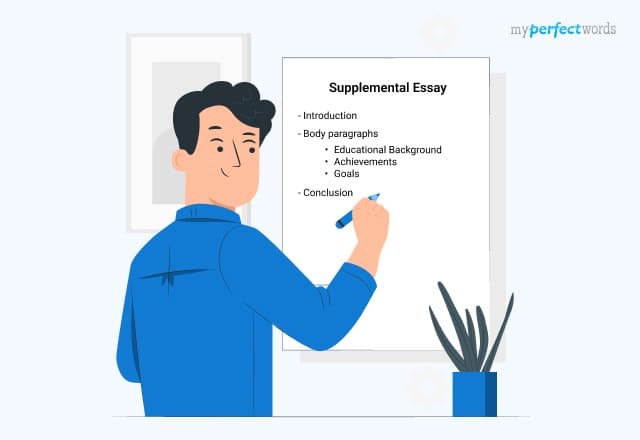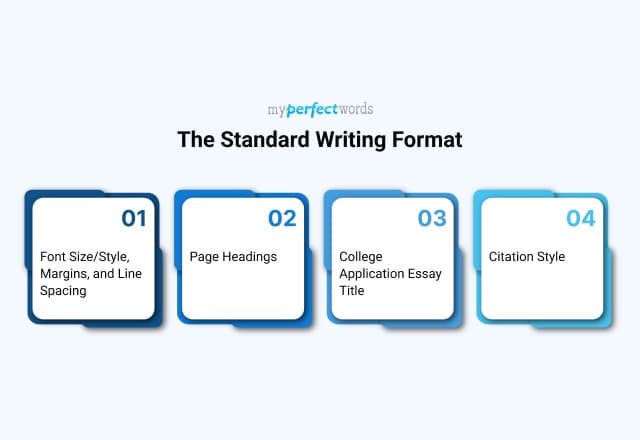
Have you ever felt stuck trying to write the perfect statement of purpose (SOP)? You're not alone.
Crafting an SOP can be overwhelming—there’s so much at stake in getting it just right. What format should you follow? How do you strike a balance between being professional yet authentic? And how do you make your application stand out from the rest of the applicants?
It’s easy to feel anxious when you know your future might depend on this single document. But don’t worry! With the right guidance, clear examples, and actionable tips, writing an impactful SOP can become much simpler.
Let’s start by understanding the basics. What exactly is an SOP, and why is it so important? Keep reading to find out the statement of purpose meaning in the next section.
On This Page![]()
- 1. What Is A Statement Of Purpose?
- 2. Statement Of Purpose Format
- 3. How To Write A Statement Of Purpose: A Practical Step-By-Step Manual
- 4. Statement Of Purpose Examples
- 5. Essential Tips For Writing An Outstanding Statement Of Purpose
- 6. Primary Topics To Cover In Your Statement Of Purpose
- 7. Personal Statement vs. Statement Of Purpose
What Is A Statement Of Purpose?
A (SOP) statement of purpose is a formal essay that highlights your academic background, career goals, and reasons for applying to a particular graduate program. Think of it as your opportunity to showcase your personality, ambitions, and how you align with the program’s values.
Unlike a general college application essay, which might focus on broader aspects of your life, an SOP is specifically tailored to demonstrate why you’re an excellent fit for the program and how it aligns with your future plans.
It’s a key part of the admissions process that helps decision-makers or admission committees understand who you are beyond grades and test scores.
How Long Should A Statement Of Purpose Be?
A former associate director of enrollment services at Northeastern University named Jared Pierce, emphasizes that a well-crafted statement of purpose can significantly influence a graduate student’s admission decision.
“The statement of purpose is your chance to share your story—who you are and why you should become part of the university’s community. It helps the admissions team see your unique value and understand how you’ll contribute to their program,” he explains.
Pierce recommends keeping the statement between 500 and 1,000 words, typically fitting it onto one page. Use a clean, professional font sized 11 or 12 points and leave ample white space for readability. If double-spacing is requested, be sure to follow that guideline.
Statement Of Purpose Format
Writing a well-structured statement of purpose (SOP) is crucial for effectively conveying your qualifications and aspirations.
Such a statement typically consists of certain key structural components that collectively form a cohesive narrative.
How To Structure A Statement Of Purpose? Your Full Name Your Contact Information
Recipient’s Name & Title Introduction Section
Main Body
Conclusion
Sincerely, Your Full Name |
Here is a detailed statement of purpose template for your reference:
How To Write A Statement Of Purpose: A Practical Step-By-Step Manual
Writing a compelling and strong statement of purpose (SOP) may seem challenging, but breaking the process into manageable steps can make it both easier and more effective.
From brainstorming ideas to polishing the final draft, each stage plays a critical role in creating a powerful and personalized document.
Let’s look into the key steps for crafting an impressive SOP.
Step #1: Explore Your Ideas
Before you start writing, spend time reflecting on your goals and motivations. Ask yourself questions that uncover why you’re pursuing this degree and what you hope to achieve.
Consider:
- What drives your interest in this program or field?
- Why are you so passionate about this field of study?
- How do your past experiences shape your aspirations?
- Which aspects of the program (courses, faculty, opportunities) appeal to you most?
- What unique qualities or experiences will you bring to this academic community?
Jotting down your thoughts will help you uncover a clear narrative and ensure your SOP stands out with authenticity and clarity.
Step #2: Create A Structured Outline
Having a well-organized outline helps maintain focus and guarantees your SOP flows logically. Here’s a recommended structure:
Introduction
- Start with an engaging hook to capture the reader’s attention.
- Provide a brief introduction of who you are and what motivates you to pursue this degree.
Main Body
- Highlight your academic and professional achievements related to the program. Share specific examples to demonstrate your skills and dedication.
- Discuss your professional goals and explain how the program aligns with them.
- Clearly outline why you’re interested in this specific school or program and how you can contribute to their community.
Conclusion
- Summarize your key qualifications and reiterate why you are a great fit for the program. End on a confident and positive note.
An outline like this confirms every section adds value and keeps your writing focused.
Step #3: Draft Your Statement
The first draft is your opportunity to put your ideas into words. Focus on clarity and honesty rather than perfection.
Key Tips:
- Show Your Passion: Write about what excites you about the program and your chosen field.
- Be Genuine: Admissions committees want to hear your voice, so avoid overly formal language.
- Showcase Your Interest: Mention specific aspects of the institute or program that inspire you.
Remember, this is your first attempt—polishing comes later.
Step #4: Polish & Perfect Your SOP
Editing is a crucial step that makes certain that your statement of purpose meets the highest standards.
Checklist:
- Follow Guidelines: Adhere to word count, font, and formatting instructions.
- Proofread: Check for spelling, grammar, and punctuation errors.
- Seek Feedback: Ask a trusted mentor, friend, or advisor to review your work and provide constructive feedback.
Taking the time to refine your statement assures that it reflects your best self and leaves a lasting impression.
By following these steps, you can create a winning SOP that tells your story with clarity, authenticity, and purpose.

Statement Of Purpose Examples
Having access to well-crafted examples can provide valuable insight into writing your own SOP. In this section, we’ll share the statement of purpose samples tailored for different academic levels, from undergraduate to graduate and Ph.D. programs. These examples are also available as downloadable PDFs for your convenience.
You can also check out our college application essay examples blog for getting inspiration and additional ideas.
Essential Tips For Writing An Outstanding Statement Of Purpose
Drafting a statement of purpose is both an art and a science, where attention to detail and authenticity can make all the difference.
Below are actionable tips to help you create a standout SOP:
- Understand The Guidelines: Carefully review the program's requirements to ensure your SOP meets word limit, formatting, and content expectations. This step confirms your application aligns with what the admissions committee is looking for.
- Highlight Your Accomplishments: Create a detailed list of your academic, professional, and personal achievements. This will help you selectively showcase the ones most relevant to the program, making your application impactful.
- Be Genuine About Your Intentions: Clearly articulate why you’re applying, focusing on your passion and long-term goals. Authenticity is key to demonstrating your commitment to the field.
- Use Active Voice To Add Energy: Frame your experiences and goals using active language to keep your SOP engaging and dynamic. For instance, say "I led a project" rather than "The project was led by me."
- Support Claims With Examples: Back up your statements with concrete examples to add credibility. For example, instead of stating you’re a strong leader, share a specific instance where you successfully led a team.
- Show Resilience & Determination: Highlight moments where you overcame challenges or adversity to demonstrate your perseverance. Admissions committees value candidates who show strength in the face of obstacles.
- Emphasize Drive & Potential: Showcase your motivation, capabilities, and the value you bring as a graduate student. Include examples of your dedication to growth and learning.
- Carefully Proofread: Before submitting, review your SOP multiple times for grammar, clarity, and formatting errors. A clean document reflects your professionalism and attention to detail.
Primary Topics To Cover In Your Statement Of Purpose
Your SOP should be a compelling narrative that highlights your qualifications and aspirations. It should answer key questions that admissions committees want to know.
Here's how you can refine it:
- Explain Your Motivation For Graduate Studies: Share the driving force behind your decision to pursue advanced education, linking it to your passion, long-term goals, and the specific field of study.
- Discuss Your Work & Volunteer Experience: Highlight professional and volunteer experiences that have shaped your skills and understanding of the field, showing how they connect to your academic and career objectives.
- Mention Relevant Internships & Assistantships: Detail any hands-on learning experiences that have given you a practical edge, emphasizing how they prepared you for the challenges of graduate studies.
- Showcase Your Key Accomplishments: Provide examples of significant achievements—academic, professional, or personal—that set you apart and demonstrate your ability to excel.
- Highlight Your Core Skills: Outline desirable skills such as leadership, research, or technical abilities, showing how they make you a strong candidate for the program.
By thoughtfully addressing these topics, you can create a well-rounded SOP that captures your qualifications and potential effectively.
Personal Statement vs. Statement Of Purpose
While often used interchangeably, a personal statement and a statement of purpose serve distinct purposes in the application process. Understanding their differences is essential to crafting each effectively.
Below is a table outlining their key distinctions:
Aspect | Personal Statement | Statement Of Purpose |
Focus | Centers on your personal background, experiences, and motivations. | Focuses on your academic and professional goals and aspirations. |
Tone | Reflective and narrative, often sharing personal anecdotes. | Formal and goal-oriented, emphasizing plans and qualifications. |
Content | Highlights life experiences, challenges, and inspirations that shaped you. | Details academic achievements, research interests, and career plans. |
Purpose | Demonstrates who you are as an individual and what drives you. | Shows how you align with the program and your future contributions. |
Structure | Looser, with room for storytelling and personal expression. | More structured, with a clear focus on academic and professional trajectory. |
Length | Typically shorter, around 500-650 words. | Slightly longer, usually 500-1,000 words, depending on requirements. |
Both documents play a crucial role in your application, but tailoring them to their distinct purposes will help you present a well-rounded and impactful profile.
All In All,
Whether you're starting from scratch or fine-tuning your SOP, the above guidelines, samples, and tips will help you understand a statement of purpose and write a perfect one.
However, if you are having issues, then it's best to hire expert writers!
We know that personal statement writing is not an easy task. Our college admission essay writing service provides you with 100% original statements with free revisions.
What’s that? “I’m looking for a reliable essay writing service.” That’s exactly what we love to hear! At MyPerfectWords.com, our professional writers are here to deliver a well-crafted, custom essay tailored to your needs.
So why wait? Place your order today and let our writing service help you achieve academic success with confidence!
Frequently Asked Questions
What points to consider before you begin writing your statement of purpose?
Before you start drafting your statement of purpose, it’s important to keep a few key considerations in mind to make sure it’s effective and compelling.
Here are the points to consider:
- Understand The Program Requirements: Review the specific guidelines provided by the program, including word count, formatting, and any prompts.
- Clarify Your Goals: Reflect on why you’re applying and how the program aligns with your academic and career objectives.
- Know Your Audience: Consider the admissions committee’s perspective and what they seek in a candidate for the program.
- Identify Key Experiences: Highlight relevant academic, professional, or personal experiences that directly support your application.
- Research The Institution: Familiarize yourself with the program’s strengths, faculty, and resources to tailor your SOP accordingly.
- Plan Your Structure: Organize your thoughts in a clear, logical flow to ensure your statement is cohesive and easy to follow.
How do I start off a statement of purpose?
To begin your statement of purpose, start with an engaging introduction that captures the reader’s attention and sets the tone for the rest of your application. You can begin by sharing a personal story, an academic experience, or a defining moment that sparked your interest in the field.
This will help establish a connection with the reader while also providing context for why you’re pursuing graduate studies. Make sure to briefly mention your long-term goals, highlighting how they align with the program you are applying to. An effective opening should draw the reader in and give them a clear sense of your passion and motivation.

Write Essay Within 60 Seconds!
Use our AI tool to generate high quality essay
WRITTEN BY
Cathy A.
Cathy has been been working as an author on our platform for over five years now. She has a Masters degree in mass communication and is well-versed in the art of writing. Cathy is a professional who takes her work seriously and is widely appreciated by clients for her excellent writing skills.
Keep reading
Write an Outstanding College Application Essay in Easy Steps With Example

22+ College Essay Applications That Increase Your Admission Chances

How to Format a College Application Essay With Tips & Examples

200+ Top College Application Essay Prompts and Topics for 2025
